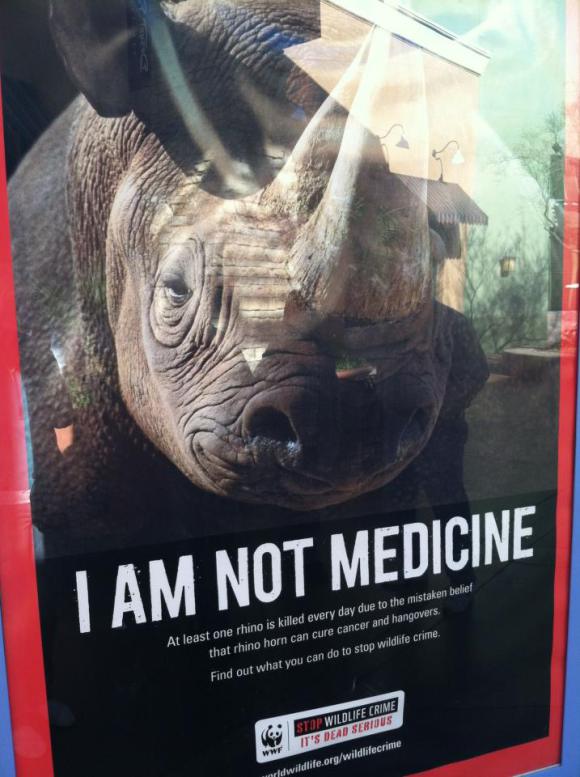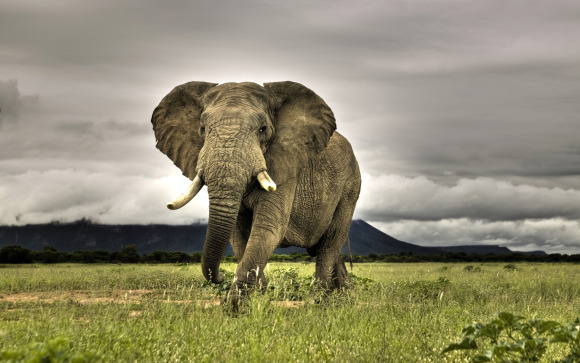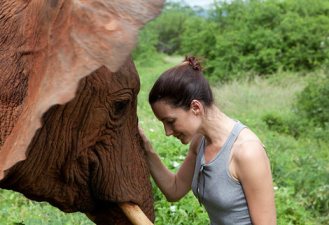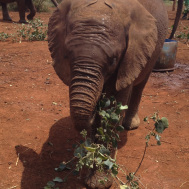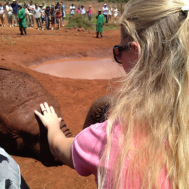I love to travel. The excitement of new sights, sounds, smells and tastes are worth the hassle of airport security and packing. In the less than thirty years I’ve been walking on this earth, I’ve had the privilege to travel to six of the seven continents, visiting at least fifteen countries and living in three. My dream trip? An elephant expedition! To travel the world visiting the natural habitats of elephants. And where might these be? The first and most obvious, Africa (which will be the focus of this blog post. Part II will focus on Asian elephants).
This is a Loxodonta africana with an estimated population of 470,000 - 690,000 individuals. But Africa is a huge continent. Where exactly to these beasts of nature thrive? Currently South Africa is a stronghold for the species, although with current rates of poaching, conservationists estimate extinction within 12-50 years.
Physically, the African elephant is the world’s largest terrestrial animal. Some interesting details about this animal:
1. The trunk, which is an extension of the upper lip and nose, is used for communication and handling objects. African elephants have 2 opposing extensions oat the end of the trunk (in contrast to the Asian elephant which only has one.)
2. African elephants have tusks, modified incisors that grow throughout the elephants’ life, and occur in both males and females. These are used in fights, for marking, feeding and digging. Researcher Cynthia Moss explains more about tusks in The Truth About Tusks.
3. Another feature of the African elephant are their very large ears, which allow them to radiate excess heat.
There are also two subspecies to the african elephant:
- Savanna (or bush) elephant (Loxodonta africana africana) - larger than forest elephants, their tusks curve outwards. Families contains 10 individuals, although many units join together to form a “clan” of up to 70 members, led by a female. Sometimes herds can form temporary aggregations of up to 1,000 individuals, but sights like this are becoming less common.
- Forest elephant (Loxodonta africana cyclotis) - smallest elephants in Africa, they are darker and their tusks are straighter and downward pointing. These elephants live in smaller family units.
© IUCN African Elephant Red List
Where are these elephants located in Africa? Less than 100 years ago, the African elephant roamed from the Mediterranean coast to the southern tip of the continent with 3-5 million elephants in the wild. Today, 80% of herds have been lost in some regions. Now the forest elephant is found in the tropical rainforests of west and central Africa. The savanna elephant occurs in eastern and southern Africa, with highest densities in Botswana, Tanzania, Zimbabwe, Kenya, Zambia and South Africa. Their numbers very greatly over the 37 states they range with some populations endangered. For example, most countries in West Africa count their elephants in tens or hundreds, with animals scattered in small blocks of isolated forest; probably only three countries in this region have more than 1,000 animals. However, in southern Africa, there are now 300,000 elephants now roaming. Unfortunately, less than 20% of the elephant populations are under formal protection.
Take a moment to review some interesting facts about elephants and consider joining the frontline, to kill the trade.
Then spread the word to your family and friends by sharing this blog with them. (wondering how elephants affect you? check out Why Should I Care)
Part II of the Elephant Expedition, focusing on Asian Elephants, will follow shortly.
(Photos and information reposted from WWF)
Like this:
Like Loading...

